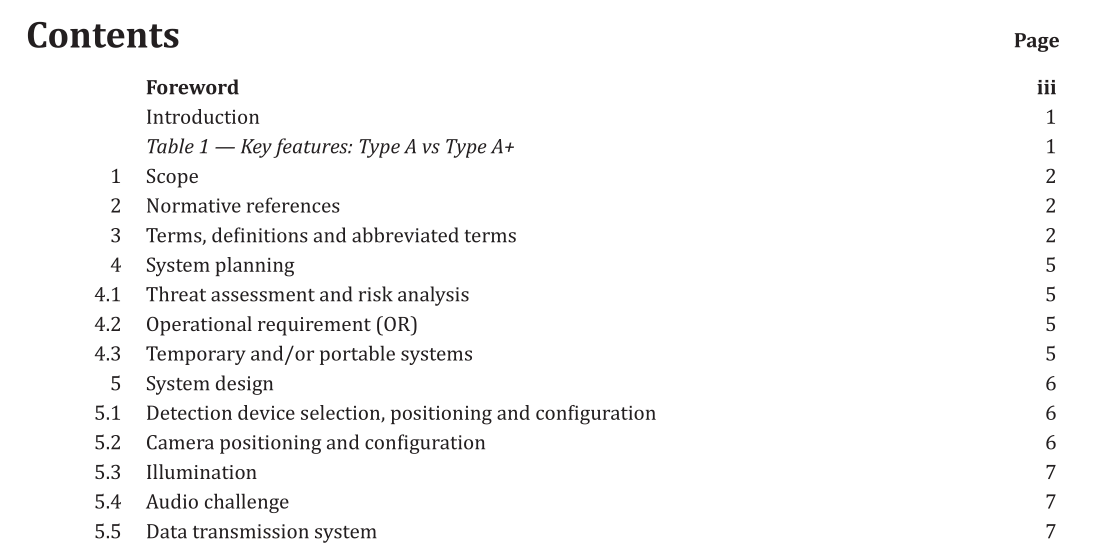BS 8418:2021 pdf download.Design, installation, commissioning and maintenance of detector-activated video surveillance systems (VSS) — Code of practice
A detection-activated video surveillance system (VSS), also known as CCTV (closed circuit television), is intended to obtain a response to a con irmed incident from the police (or other responding authority). The recommendations of this British Standard are intended to assist in ensuring that the integrity and effectiveness of an installed VSS are not compromised. The resilience and quality of the VSS needs to always be maintained and in all environments in which the system is required to work. When an alarm occurs, images are transmitted to, and displayed at, a remote video response centre (RVRC) to enable the cause to be determined. An emergency response is only requested by the RVRC if there is positive evidence in these images of unauthorized access to the secure area and of actual or perceived criminal activity. NOTE Requirements for the handling of alarms, technical services and structure of the RVRC are contained in BS EN 50518, BS 9518, BS 8591 and BS 5979. An RVRC might be referred to as an ARC or a monitoring centre in other standards. For the purposes of this British Standard, the term RVRC is used throughout. This British Standard recognizes two key types of system (Type A and Type A+) with different recommendations dependent on the levels of risk. Table 1 summarizes the key differences to assist with the user’s understanding.
4 System planning
4.1 Threat assessment and risk analysis Prior to VSS design, and to help understand its purpose, a survey of the intended site should take place and a threat assessment and risk analysis should be performed. The threats and hazards to the premises should be identi ied and assessed for their likelihood and impact (these represent the risk to the premises, property or organization). The premises area to be protected is likely to be an open or closed site and the level of detection; the camera coverage and expected response should take account of this. The threat assessment should be used to determine the most appropriate design parameters and the need to minimize false alarms to the RVRC. The VSS should be designed to mitigate the assessed risks. NOTE 1 Examples of issues to be taken into account are given in Annex A. BS EN 62676-4:2015, 4.2.1 also gives examples of issues to be considered when conducting a threat assessment and risk analysis. NOTE 2 BS ISO 31000 describes the principles for carrying out a risk assessment.
4.2 Operational requirement (OR)
Following the risk analysis, threat assessment and site survey, an OR document should be produced. NOTE 1 The OR is a formal written statement of need, justi ications and purpose of the proposed VSS. In certain instances, the client might supply the OR. The OR should clearly state what the customer expects the functions of the system to do. If there is an agreement between the system designer and the customer, the OR could be de ined within the system design proposal (SDP) and speci ication; if so, this should be clearly stated within the document. The OR should include as a minimum the factors contained in Annex B. NOTE 2 BS EN 62676-4:2015, 5.2 and 5.3 gives further recommendations for the content of an OR document.
BS 8418:2021 pdf download
